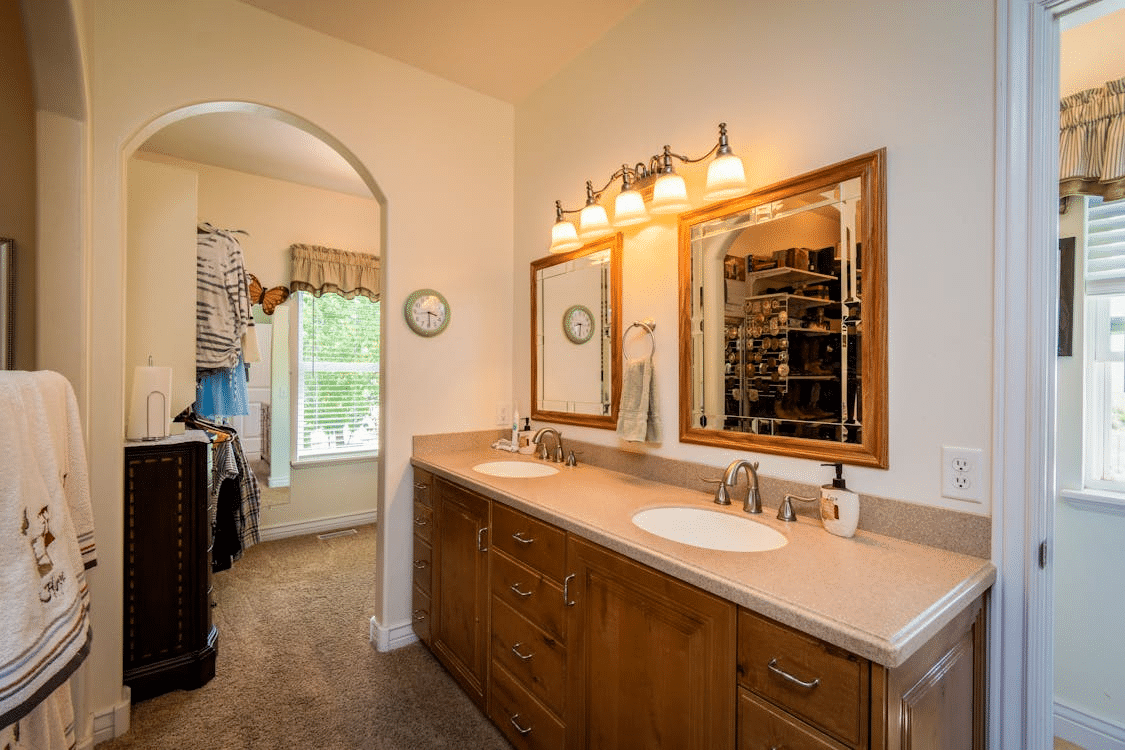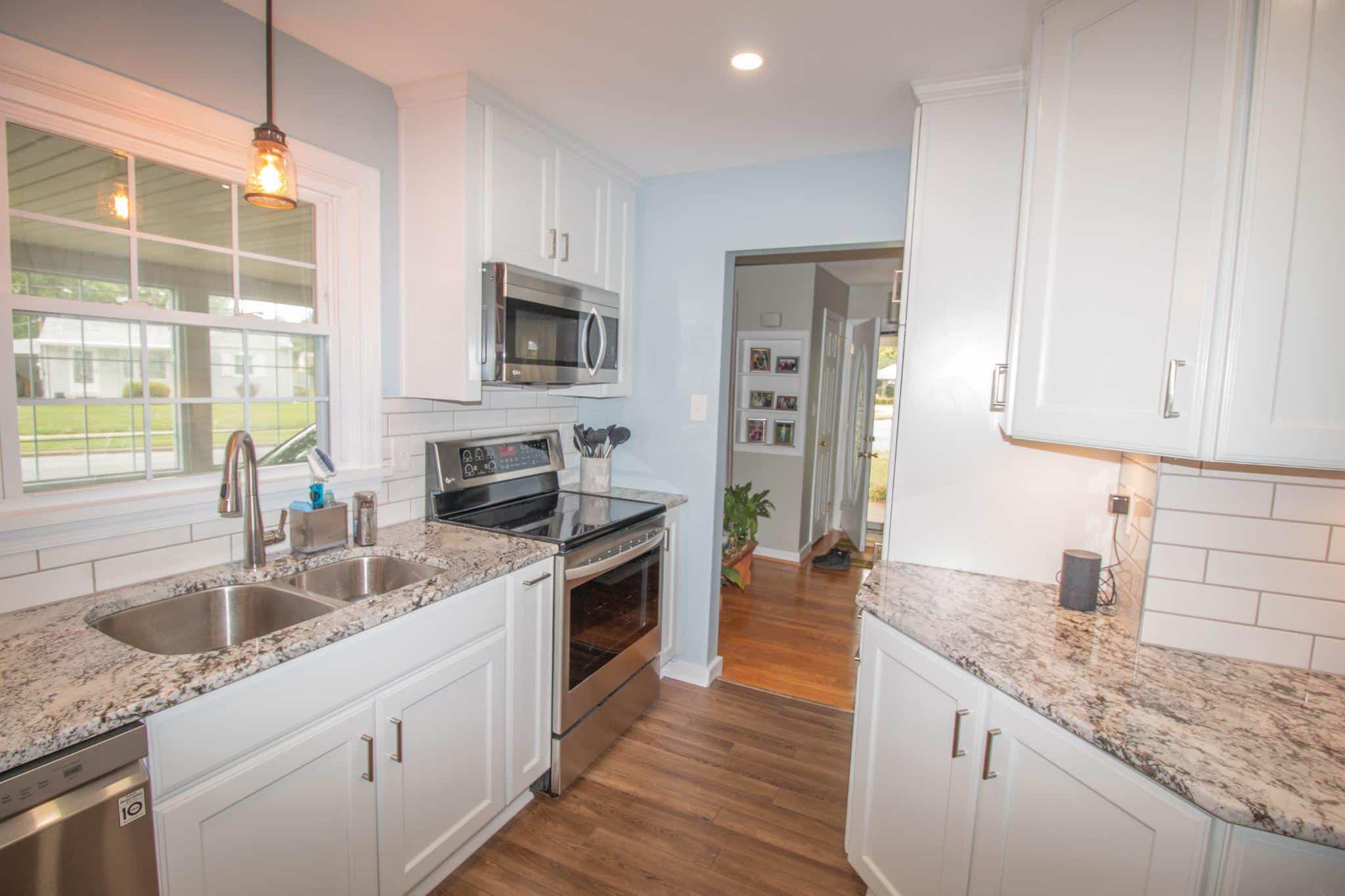Practical elegance has become one of the main directions in modern home design. People are looking for ways to make their homes stylish without giving up the comfort that comes from functional spaces. Simple design choices, quality materials, and minor but thoughtful upgrades are leading the way in how families shape their living environments.
In many cities, the trend is clear. Homes are being refreshed for appearances while also making everyday life easier. Families want spaces that are inviting, durable, and well thought out.
Using Neutral Backdrops
Walls, large furniture pieces, and flooring often work best in neutral colors. Soft grays, warm beiges, and natural whites give rooms a calm and balanced foundation. They allow light to reflect more evenly and create a feeling of openness. A home that starts with this kind of palette has a base that is easy to live with long-term.
Accents placed against neutral foundations stand out more. A patterned rug, an art piece, or a colorful chair brings personality into the room without crowding it. Homeowners can change such accent items whenever they want a new look, while the backdrop continues to provide consistency.
Upgrading Essential Spaces
Bathrooms and kitchens are often where practical elegance makes the biggest impact. A bathroom that has modern lighting, a better vanity, and an improved shower feels more enjoyable to use each day. Kitchens benefit from updated storage, refreshed cabinetry, and efficient layouts that allow cooking and cleaning to flow naturally. The effect is both functional and pleasing to the eye.
Working with a full bathroom remodeler can take upgrades in the right direction. A remodeler can help with creating layouts that feel open and balanced, suggesting durable materials, and adding design elements that bring in a touch of refinement. A bathroom with a walk-in shower, well-placed mirrors, and practical storage becomes a space that supports comfort while looking polished.
Choosing Countertops
Countertops carry much of the activity in both kitchens and bathrooms. Families prepare food, place appliances, and handle daily routines in them. A surface that resists stains, scratches, and heat makes life easier while still adding to the style of the room. Materials like quartz, granite, or high-quality solid surfaces are popular because they stay strong and remain visually appealing.
A countertop choice often guides the rest of the design in a room. When the colors, finishes, and textures work well, the entire kitchen or bathroom feels more connected. Homeowners are leaning toward finishes that stay timeless, such as neutral shades or subtle veining.
Introducing Subtle Luxury
Luxury in the home does not need to be grand to feel impressive. Specific details can lift the design of a room and make it feel more refined. Metal finishes on faucets, carefully chosen cabinet handles, or a textured backsplash are examples of how simple elements bring elegance into everyday life.
Under-cabinet lighting in the kitchen or soft sconces in the bathroom also improve both style and function. Subtle additions like this bring comfort while raising the overall quality of the design.
Highlighting Flooring
Floors carry constant use and are one of the largest surfaces in any home. Choosing materials that can handle traffic while maintaining visual appeal is key. Hardwood, tile, and high-quality vinyl provide strength while also adding warmth and character. They create a base that grounds the design of each room.
Flooring choices also help link spaces together. Similar tones or finishes in different areas bring a sense of flow, making the home feel more unified.
Selecting Window Treatments
Windows shape the way light enters a room and also influence privacy. Treatments like blinds, shades, and curtains add another layer of comfort while contributing to the design. Clean and simple styles frame the windows without making them heavy. They also help regulate how much light enters at different times of day.
A sheer curtain can soften natural light, while a solid panel can provide privacy when needed. Choices in fabric, texture, and color all influence the final look of a space.
Elevating Outdoor Spaces
Outdoor areas are becoming an extension of the home. Patios, decks, and gardens are being designed with comfort in mind, making them places where families can relax or entertain with ease. Comfortable seating, weather-friendly flooring, and good lighting transform outdoor spaces into everyday living areas. A well-planned outdoor setup also adds to the value of the home.
Practical elegance outside often comes from simple details. A shaded area for hot days, a fire pit for cooler evenings, and planters filled with greenery give the space personality and warmth.
Incorporating Statement Mirrors
Mirrors bring both function and style to interiors. They reflect light, which helps rooms feel brighter, and they also create the appearance of more space. A mirror positioned in the right spot, such as across from a window, can make a noticeable difference in how open a room feels.
Statement mirrors, in particular, serve as decorative pieces. Frames with unique shapes or finishes become focal points, adding visual depth without needing additional décor. Whether placed in an entryway, living room, or bathroom, a mirror combines practicality with elegance in a way that enhances the overall design of the home.
Enhancing Ceilings and Walls
Attention to ceilings and walls can transform a room without requiring a full renovation. Crown molding, paneling, or a textured paint finish creates subtle detail that elevates the space. A simple addition like a chair rail or wainscoting changes the atmosphere of a room, making it feel more finished.
Accent walls provide another option. A wall in a slightly deeper color, wallpaper with a calm pattern, or wood paneling can become a design feature without overwhelming the space. Ceilings also offer opportunities, with beams, painted accents, or unique lighting making them stand out.
Coordinating Hardware Finishes
Handles, knobs, faucets, and hinges may seem minor, but when they share a consistent finish, the room feels more cohesive. Coordinated finishes create visual order and show attention to design.
Popular finishes include brushed nickel, chrome, matte black, and brass, each adding its own mood to the space. Matching hardware across different elements, such as cabinets, doors, and lighting, gives a polished appearance.
Opting for Minimalist Designs
Minimalist design focuses on keeping spaces clean, open, and free of unnecessary clutter. The idea is not emptiness, but a deliberate choice of what to include. Fewer items in a room allow the ones that remain to stand out, creating a simple and elegant look. Light colors, open layouts, and streamlined furniture all contribute to this approach.
Warmth in minimalist spaces often comes from texture and natural materials. Wood, linen, or soft lighting makes the room feel comfortable without needing excessive decoration.
Practical elegance is shaping the way people improve their homes. It is about making choices that add both beauty and function, creating spaces that are easy to live in and enjoyable to look at. From upgraded bathrooms and countertops to flooring, window treatments, and more, the details matter as much as the larger projects.








